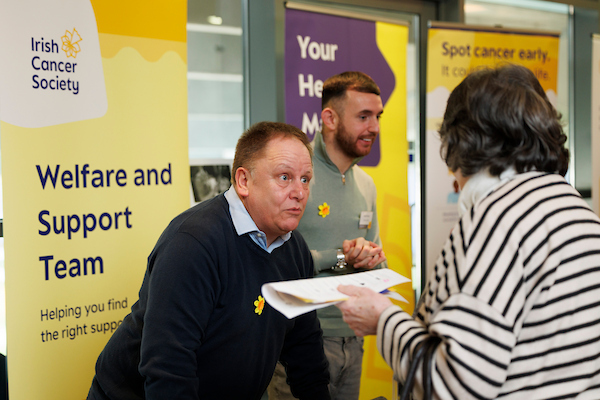Chronic myeloid leukaemia (CML)
After treatment
What follow-up do I need?
Once treatment is over and you are in remission, you will carry on taking TKIs. You will need regular check-ups. This is called follow-up. Your doctor will examine you and do blood tests. Other tests such as bone marrow tests and cytogenetic tests can be arranged if needed.
Your doctor will look at the number of blast cells in your blood and the number of cells with the Philadelphia chromosome or the BCR-ABL1 gene. Depending on the results of your tests, sometimes the doctor will give you a different drug or change your dosage.
Tell your doctor if there are any changes in your body or any new symptoms. You will probably have more bone marrow tests to make sure you are still in remission.
If you are between check-ups and have a symptom or problem that is worrying you, call your specialist nurse for advice or to arrange an earlier outpatient appointment if necessary.
If you become suddenly unwell and can’t contact your specialist nurse or hospital team, go to your GP or the emergency department at the hospital.
Why follow-up is important
It’s important to go to your follow-up appointments so your doctor can check for signs of the cancer coming back (recurrence) and help with any side-effects that you may have. They can also check for new side-effects that may develop after you have finished treatment. It is best to be aware of these as early as possible so that suitable treatment can be given.
Life after treatment
The end of treatment is a time when people often expect to feel relieved, happy and able to get on with life again, but it can take some time to adjust and for your body and mind to recover.
We have information to help you with:
- Side-effects
- Your feelings after treatment
- Living a healthy lifestyle
- Financial and practical matters
LACES after-treatment workshop

Join our Life and Cancer – Enhancing Survivorship (LACES) programme when you have finished treatment or started maintenance therapy.
This workshop covers topics such as diet, exercise, wellbeing, finance and self-management and gives information on support and services to help you.
What if the CML comes back?
If the CML starts to cause symptoms again after remission, this is called recurrence. CML can still be treated after recurrence to try to put it back into remission.
Recurrence can happen during or soon after treatment, or months or years later.
The reason your cancer recurs while on treatment may be because the disease has become resistant to the drugs being used. This is known as refractory disease. In this case, other drugs may be given to you. A stem cell transplant might be considered as a treatment for some patients.
If you relapse some time after treatment, you might have the same chemotherapy drugs you were first treated with, as you responded well to them. More treatment may or may not include a stem cell transplant.



Talk to a Cancer Nurse
Our Daffodil Centres


